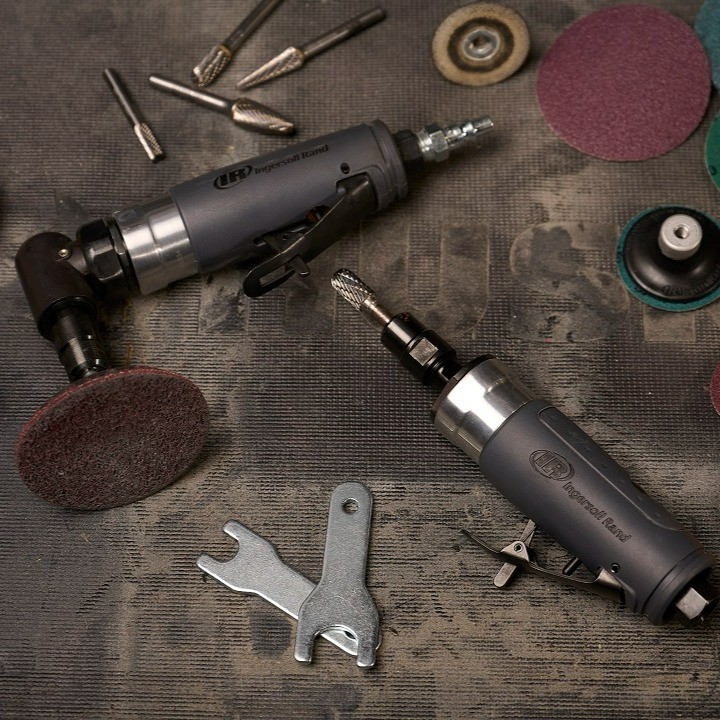Air die grinders are versatile, powerful tools that can be found in almost every workshop, garage, and manufacturing facility. These pneumatic tools are designed for grinding, polishing, deburring, and cutting applications, making them an essential addition to any toolbox. But with so many options available, how do you choose the right air die grinder for your needs? In this comprehensive guide, we’ll explore everything you need to know about including the factors to consider when choosing one, the different types available, and how to safely use and maintain your grinder.
Types of Air Die Grinders
There are two main types of air die grinders: straight die grinders and angle die grinders. Each type has its own unique advantages and is suited for specific applications.
Straight Die Grinders
Straight die grinders have a linear design, with the grinding wheel or attachment mounted directly on the end of the tool. This design allows for greater precision and control, making straight die grinders ideal for detailed work such as engraving, polishing, and deburring. Straight die grinders are also commonly used for grinding in tight spaces where an angle grinder would be too bulky.
Angle Die Grinders
Angle die grinders, on the other hand, have a 90-degree head that holds the grinding wheel or attachment at an angle to the tool’s body. This design allows for better access to hard-to-reach areas and is ideal for grinding and cutting applications that require more leverage. Angle die grinders are often used for tasks such as weld removal, surface preparation, and cutting through materials like sheet metal and tubing.
Factors to Consider When Choosing an Air Die Grinder

When selecting an air die grinder, there are several factors to consider, including power, speed, size and weight, and available accessories and attachments.
Power
Air die grinders are powered by compressed air, and their power is measured in horsepower (HP) or watts. The more powerful the grinder, the more material it can remove in a given amount of time. For heavy-duty grinding applications, you’ll want a grinder with higher horsepower, while a lower-powered grinder may be more suitable for lighter tasks and precision work.
Speed
The speed of an air die grinder is measured in rotations per minute (RPM). Higher RPMs allow for faster material removal and a smoother finish, while lower RPMs provide more control and precision. When choosing a grinder, consider the types of materials you’ll be working with and the desired finish to determine the appropriate speed range.
Size and Weight
The size and weight of an air die grinder can impact both its performance and user comfort. Larger, heavier grinders may be more powerful, but they can also be more difficult to maneuver and control, especially during extended use. On the other hand, smaller, lighter grinders may be easier to handle but may not have the power needed for heavy-duty tasks. Consider your specific needs and preferences when selecting a grinder based on size and weight.
Accessories and Attachments
Air die grinders can be used with a wide range of accessories and attachments, including grinding wheels, cut-off wheels, burrs, and sanding discs. When choosing a grinder, consider the types of accessories and attachments you’ll need for your specific applications and ensure the grinder you select is compatible with them. Additionally, some grinders come with built-in features such as adjustable speed controls, spindle locks for easy accessory changes, and exhaust systems to direct air away from the user.
Grinder Safety and Maintenance
Like any power tool, air die grinders can be dangerous if not used properly. To ensure your safety and the longevity of your grinder, follow these best practices:
Always wear appropriate personal protective equipment, including safety glasses, gloves, and hearing protection.
Inspect your grinder and accessories before each use, checking for damage or wear that could impact performance or safety.
Use the correct accessories and attachments for your specific application, and ensure they are properly installed and secure.
Follow the manufacturer’s guidelines for air pressure and lubrication to keep your grinder running smoothly and efficiently.
Keep your work area clean and well-lit to reduce the risk of accidents.
Conclusion
Air die grinders are powerful, versatile tools that can tackle a wide range of grinding applications. By understanding the different types of grinders available and considering factors such as power, speed, size and weight, and available accessories and attachments, you can choose the right air die grinder for your needs. And by following proper safety and maintenance practices, you can ensure your grinder remains a valuable asset in your toolbox for years to come.

